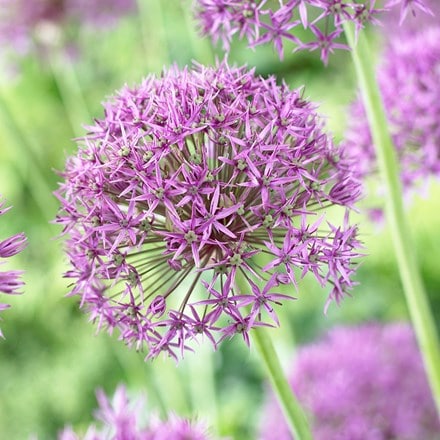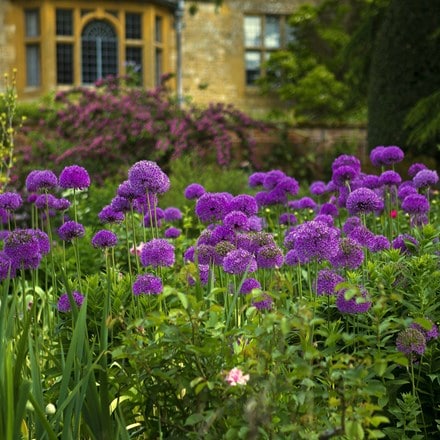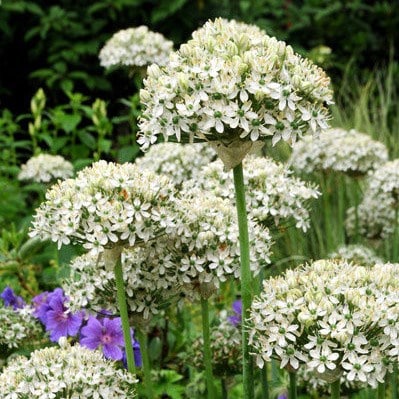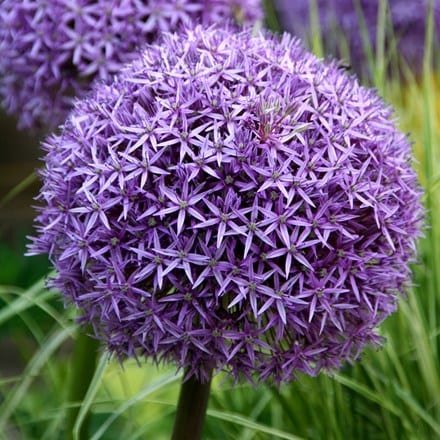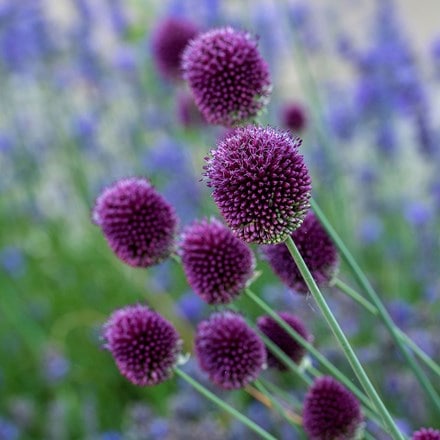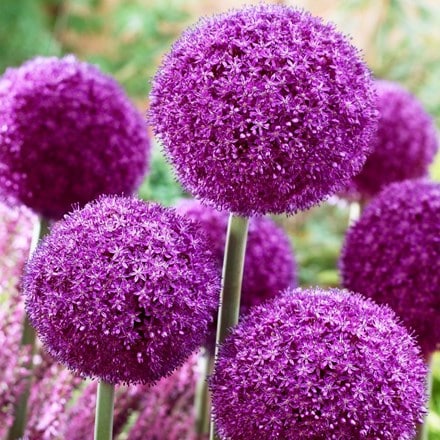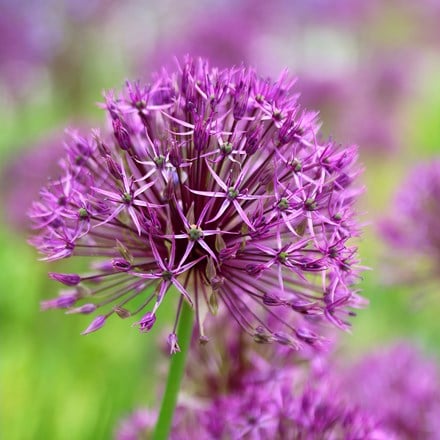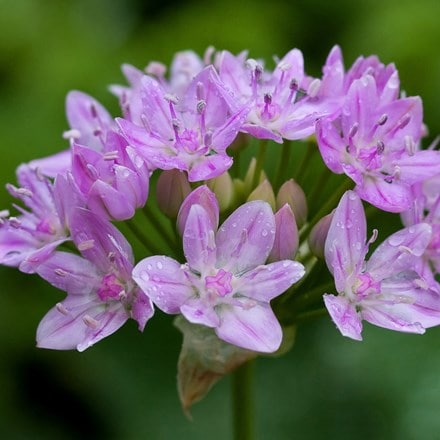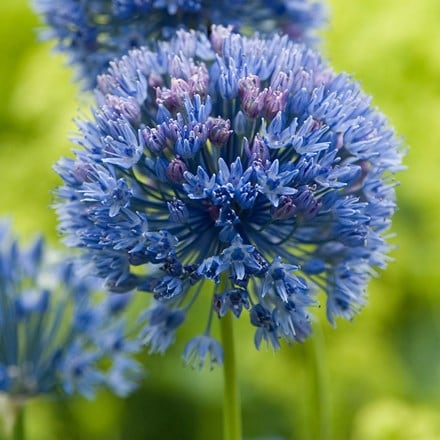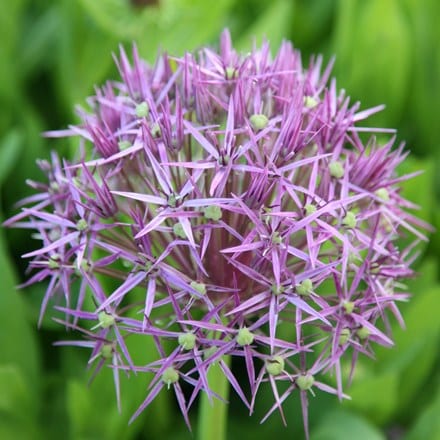When to plant allium bulbs - a simple step by step guide
Bold and statuesque alliums are a real highlight of the early summer garden. Standing proud in pots or dotted in the border, the tall stems and vivid spherical flower heads bring structure and drama. Excellent for cutting and easy to grow, they're a favourite for flower arrangements too.
Here we'll cover the basics of growing these stunning ornamental onions, including the right planting time, location, spacing and depth. Follow these steps to get allium bulbs off to a strong start and bring the best out of these beautiful blooms.


When to plant allium bulbs
The best time to plant allium bulbs is in early to mid-autumn, ideally between September and November. Giving bulbs a head start lets them establish strong root systems before the cold winter sets in. Then, when spring arrives, your allium bulbs can direct all their energy into growing above ground and developing flowers.
How to plant allium bulbs - step by step
Planting alliums is simple and you can do it before the ground freezes, which makes it easier to dig deep enough. Give enough space to giant flowering alliums like Allium cristophii and Allium 'Globemaster' to fully enjoy their large spherical blooms.
1. Choose a suitable location
Allium bulbs will thrive best in a sunny spot with free-draining soil. Choose an area of your garden that receives full sun, ideally with at least six hours of direct sunlight daily.
When planting your bulbs in the border, find the most sheltered spot to protect tall stems from blowing over. This equally applies to growing alliums in pots. Cold, exposed conditions can rot bulbs (as can waterlogged soil), so it's best to move pots to a sun-soaked spot.
If you know you'll be regularly digging in a particular bed or border, avoid planting bulbs nearby to prevent unearthing them. Bulb marker stakes make it easy to 'mark the spot' so you won't damage or disturb newly planted bulbs.
2. Prepare the soil
Bulbs planted in the ground will grow best in loose, well-draining soil. Compacted, heavy and poorly draining soils are prone to waterlogging. When soil becomes saturated, water displaces air from the soil and can starve roots of oxygen.
To ease compaction, give soil a thorough dig over and remove any weeds. Adding some organic matter such as compost or well-rotted manure will open up the soil and improve drainage. Fresh manure is too nutrient rich for bulbs and can burn developing roots. So, if possible, make sure manure has rotted down for at least 6 months before digging into the soil.
In pots, use a good peat-free general purpose compost. You could also mix equal parts of peat-free compost, John Innes No 3 and potting grit.
3. Decide on spacing
The right spacing depends on the allium's eventual size. Larger varieties (like 'Purple Sensation', 'Mount Everest', Allium sphaerocephalon and Allium giganteum) are best planted 15-20cm (6-8 inches) apart. You can plant more compact alliums like 'Eros' (or 'Graceful Beauty' with its dainty white flowers) 7.5-10cm (3-4 inches) apart.
Before you plant, first arrange your bulbs on the surface of the soil where you plan to plant them. Use canes or sticks to give you an idea of the overall effect when your allium flowers are in bloom.
4. Dig deep enough planting holes
Use a trowel, bulb planter, or soil auger to create planting holes. If using an auger and drill, it's usually easier to dig each hole in stages rather than in one go.
Aim to plant your bulbs at a depth of three to four times their own diameter. For most allium cultivars, this translates to a depth of 10-15cm (4-6 inches).
If in doubt, planting bulbs too deeply is preferable to not deeply enough. Shallow bulbs won't anchor alliums as well, so they may need support to stop them from falling over. Bulbs planted too close to the surface are also more likely to split into smaller bulbs in future.
5. Plant the bulbs
Place the bulbs in their planting holes, making sure their roots are facing downwards. Backfill the holes with soil, covering the bulbs completely. Firm the soil gently to prevent air pockets and ensure roots are in good contact with the soil.
If planting your bulbs in heavy soil, it's worth scattering some sharp sand into the holes first. This will help improve drainage before placing in the bulb.
6. Watering and feeding
After planting, water bulbs in well to settle the soil. Bulbs planted in open ground won't need watering again as alliums are drought tolerant. Pot-grown bulbs will need regular watering, but do so sparingly to avoid waterlogging.
Allium bulbs aren't particularly hungry and will usually grow well without fertiliser. In poor soil, however, they will benefit from a balanced feed in spring.
7. Mulching
To suppress weeds and insulate your bulbs, spread a 2-3 inch layer of mulch. This will help protect them from extremes of temperature. Straw, compost, oak leaves or composted bark/wood chips are all suitable materials. In spring, loosen the mulch so bulbs are able to easily broach the surface.
Alliums for drought-tolerant gardens
Alliums planted in the ground are drought resistant and don't need much water. This makes them great for gravel gardens and Mediterranean borders. This year at the RHS Chelsea Flower Show, our Nurture Landscapes Garden featured alliums planted as part of a gravel garden.
The main allium used was Allium siculum, Sicilian honey garlic. It has an unusual shape with an umbrella of apricot-coloured bells that appear in May and June.
Allium schubertii is another drought-tolerant allium with large flowerheads (up to 30cm) that thrive in sandy conditions. Try 'Caeruleum' with striking blue flowers or Allium nigrum for a drought-tolerant white allium.


Alliums in your garden
Unfussy and easy to grow, allium bulbs add sophistication to the garden and produce a stunning show for little effort.
Combine several shades of purple and weave them through your sunniest border - they'll look spectacular nestled among swaying grasses. Or pack them into deep feature pots by an entrance or walkway and wait for them to burst forth like fireworks.
Planting them at the right time, in the right way, will get them off and running. Once planted they'll take care of themselves - setting the stage for a superb show of colour and texture in spring.






